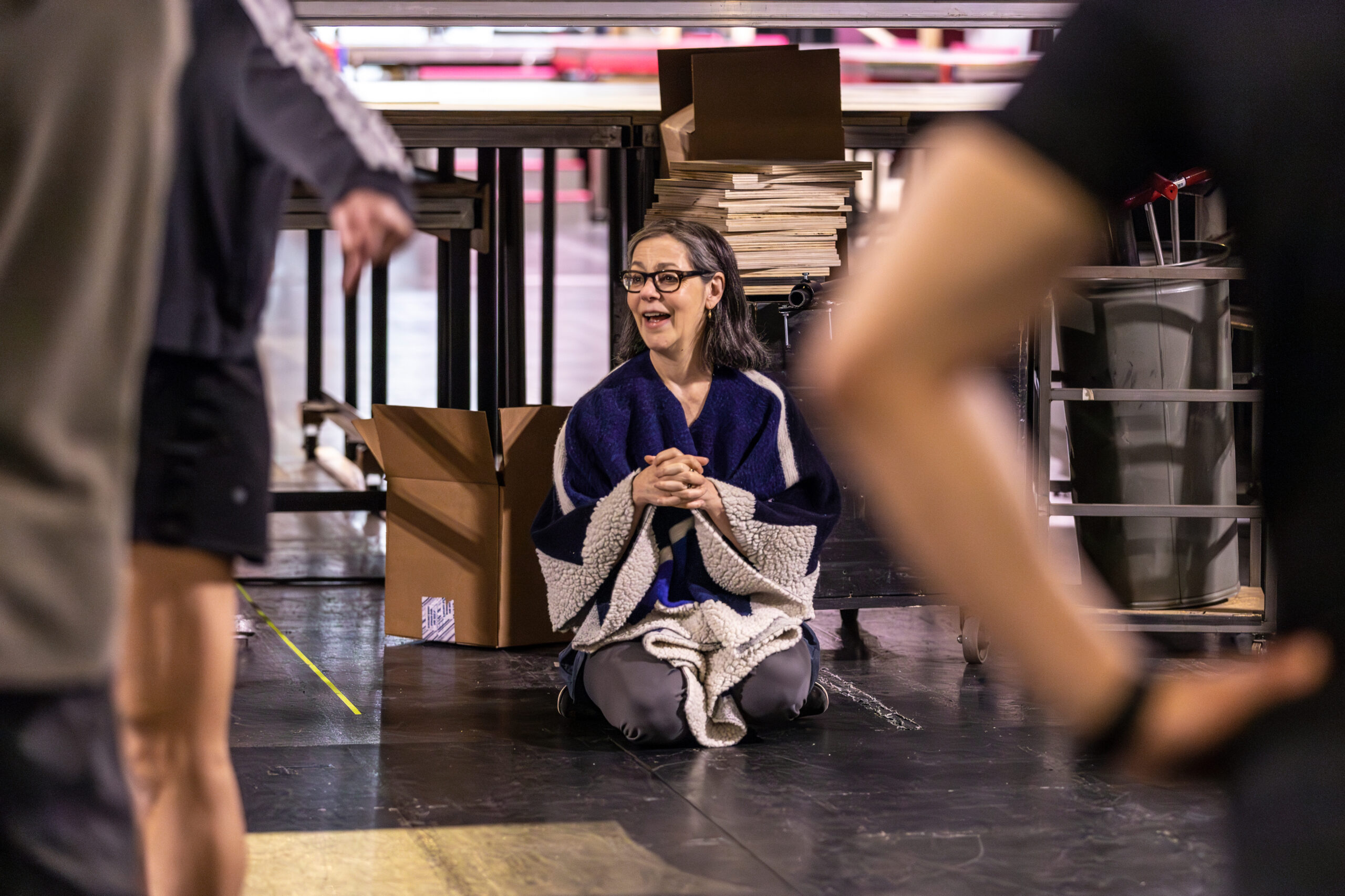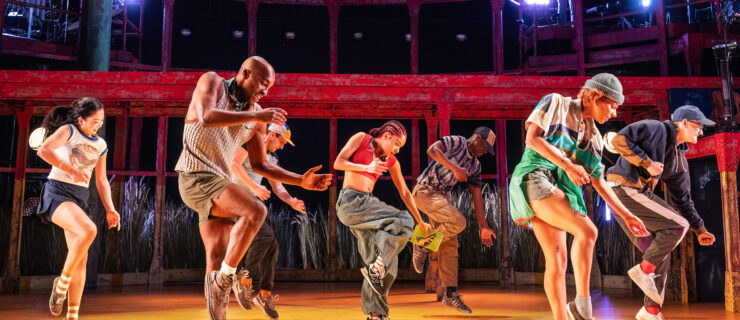Behind the Scenes with Choreographer Annie-B Parson as Here Lies Love Moves to Broadway
There’s a new nightclub opening on Broadway, and it has everything: disco balls, danceable tunes…and former Filipino dictators Imelda and Ferdinand Marcos.
Here Lies Love, the immersive, groundbreaking musical from David Byrne and Fatboy Slim, is transforming the Broadway Theatre into a discotheque, making audience members both clubgoers—dancing encouraged—and active participants in the story of the former First Lady and President, whose rise to power and epic fall from it are told through disco-inspired songs and Byrne’s signature wit.
Choreographing both the performers and the audience members—who continuously move throughout the space and occasionally learn a few moves themselves—is a big job, but one that Annie-B Parson is ready for. “It’s not intimidating,” says the choreographer, who has worked with Byrne for over a decade, including on his American Utopia. “My experience with audiences is that they do very well with whatever you give them if you’re clear.”
Though Here Lies Love has had four runs in the past decade—two at The Public Theater, where it premiered in 2013, one in London, and one in Seattle—none were at the scale of the Broadway production, which has been designed to put even more audience members up close and personal on the dance floor. It also has additional seating options for a more traditional theatrical experience—an added challenge for Parson and director Alex Timbers. “We’ve always been very aware of what it looks like from different angles,” says Parson. “Alex is very good at understanding how the space can come alive from all these different points of observation.”
Though Parson researched disco when creating the movement for the show, and built movement from her years of working with Byrne, Here Lies Love’s dance vocabulary brings a distinctly postmodern aesthetic to the Broadway stage, not dissimilar from the movement Parson has created for many years with her company, Big Dance Theater. “Bringing that to Broadway?” says Parson. “Well, we’ll see how they like it.”
Dance Magazine’s Lauren Wingenroth spoke to Annie-B Parson as Here Lies Love was readying for Broadway, and Rachel Papo photographed the first day of dance rehearsals in May.
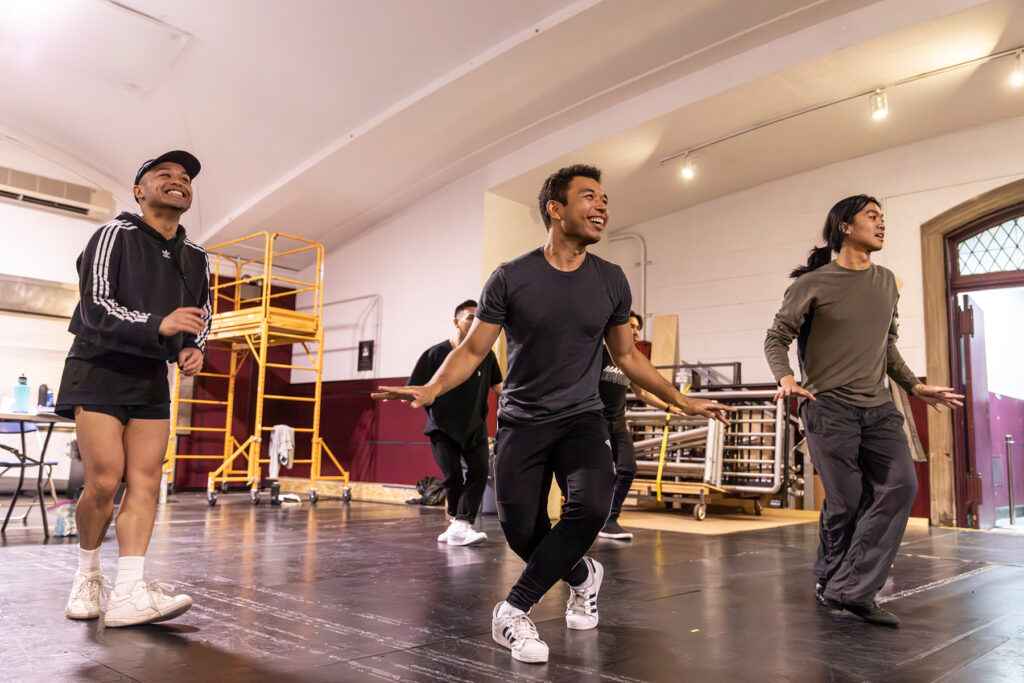


How does it feel to be reimmersing yourself in the world of Here Lies Love after all these years?
It’s been a dream of ours to bring it back at a larger scale with a larger audience. I always have felt that you need to really make this piece as dynamic as it can be; you need sort of a crisis of people on the dance floor. And because we’ve always been in smaller venues, we were limited to 100 or so people. Now, the relationship between the audience and the piece will feel perfect. I’m very interested in co-proximate, co-temporal bodies in space.
It will feel different for the bodies that are watching, too. It’s just crazy to see that many people doing what they’re told. The motif of the disco becomes more intense with more people. In the past, we’ve had very few people in the observer seats, but now I think it’s just as many as on the floor.
What else can we expect to see that will be different in the Broadway production?
It’s essentially the same show but updated, since it’s now and not then politically. Because of Bongbong [the current President of the Philippines and the son of Imelda and Ferdinand], we’re looking to highlight the complicity of the U.S. government with the dictatorship in the Philippines. It’s not one of those pieces that I did it and it’s over. It’s about Filipino history. So it’s never going to be over.
Are there any challenges you’re anticipating as you bring the show to Broadway?
Well, we have a new cast, essentially—not 100 percent, but pretty much—so of course that always feels unknown, like “How do these people execute my movement?” And, in this very small period of time, how do I transmit the tonality and the muscularity of my particular movement vocabulary? It will be unfamiliar to them because they come from a different tradition.
I think of Broadway as very wet material. I think of it as hot and I think of David’s early material as cool. So when you’re dealing with cool–dry instead of hot–wet, it’s very different for a dancer. We’re talking about tonality, muscularity, isolation. It’s not just musical theater dancers, it would be any dancer that wasn’t trained in more postmodern tradition.
Having said that, I’ve had very good luck with the casts that I’ve worked with on this show. So I wouldn’t say I’m worried about it.
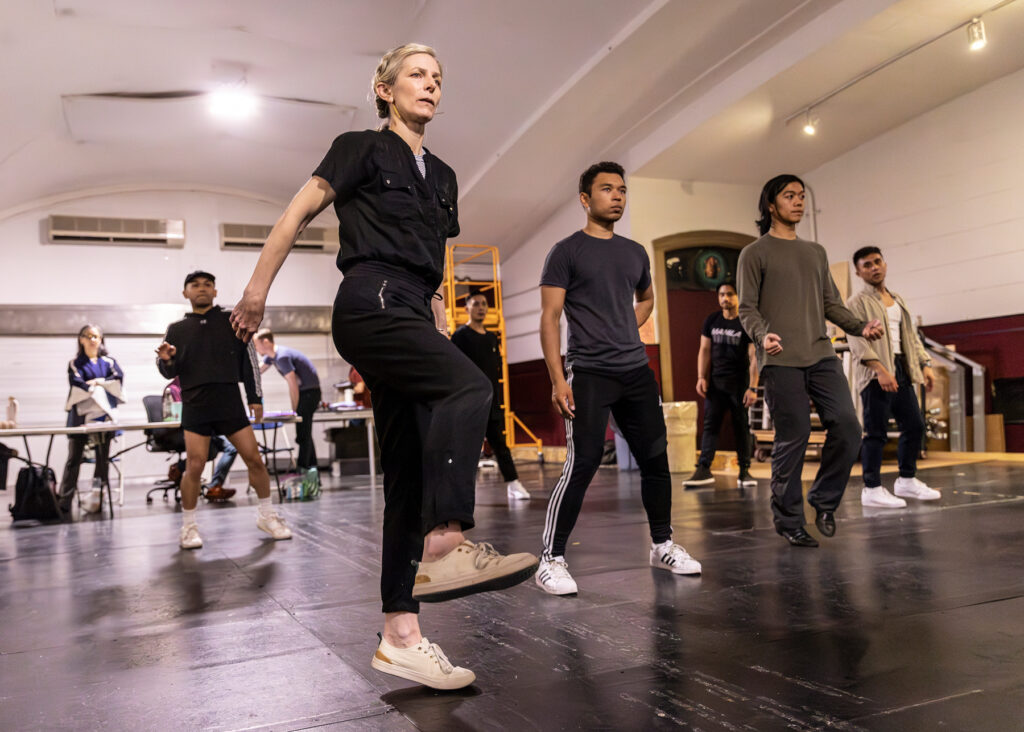


We don’t see immersive shows on Broadway often. Are you grappling with any expectations of what a Broadway show is supposed to look like?
Look, I just did American Utopia. And that’s the only Broadway thing I’ve done. I don’t have any knowledge of Broadway, I don’t tend to see Broadway shows. And aesthetically I’m very, very far away from what you would think of as a Broadway choreographer. So I don’t go in with any knowledge of what that audience is like.
The audience for American Utopia was there to see David Byrne. And they saw him, and it was his vision. So I essentially feel like it’s his vision again, and this is just as amazing. What we’re bringing musically is as groundbreaking as Bernstein when he was on Broadway; as Cole Porter when he was on Broadway; as George Gershwin when he was on Broadway. [Byrne] is accepting no tropes—no Broadway tropes are in that show. I don’t know if that’s conscious or unconscious. He’s just telling a story through his music. And to me, it will change how people think about music on Broadway, as much as Gershwin changed it and Porter changed it and Bernstein changed it. I think it will feel super-exciting to hear storytelling in a different musical voice.
What is the storytelling role of dance in the show?
Well, story is not my middle name; I am pretty narratively challenged. I would say more that I’m creating a movement logic. I think in any piece that is made by a choreographer who’s not in a tradition of musical theater, you teach the audience the vocabulary over time. So when they first see the material, it’s not going to be familiar. There’s a diagonal slant on what’s happening in the song. So I can’t say that there’s much storytelling—I would say there’s more music-telling.
You’ve made so much more work with David since Here Lies Love first premiered. How has your collaboration grown since then?
I feel like we’ve almost created a folk dance of our own, in that there’s a world of movement that has amassed coming from my body, into the music, into the dancers. It’s like one long piece for me. And I had a lot of cues from him about what he likes and where he’s coming from through references that we share. We both really love ceremony—we share videos back and forth of coronations across the world, these ancient rituals. So that is the way I understand what interests him.
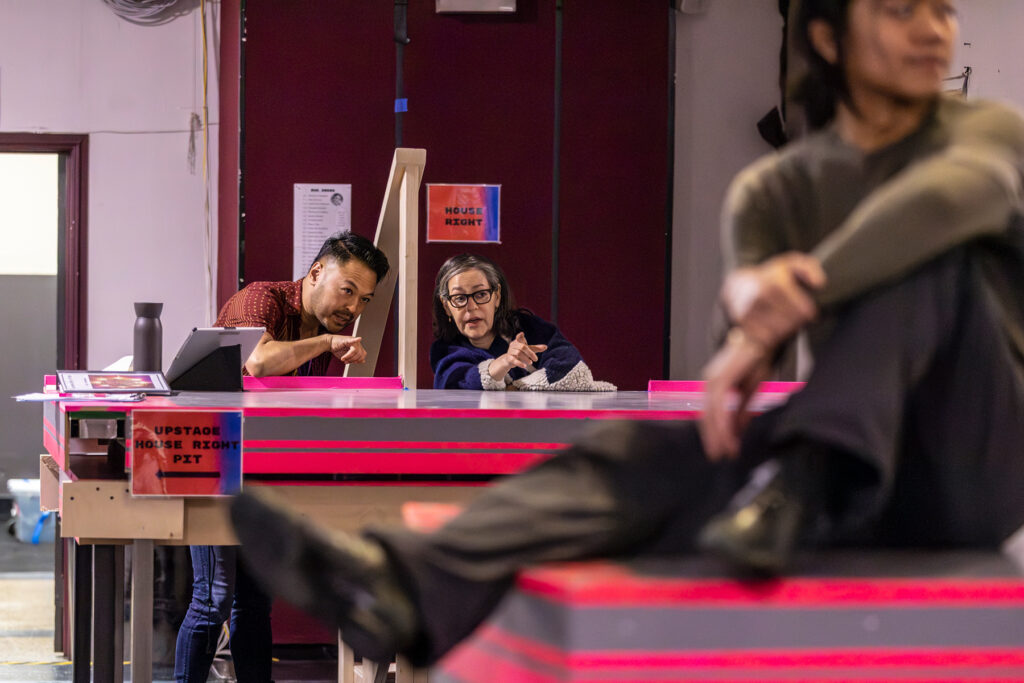


So now that you have this larger pool of references and material, will there be more layers as you build the movement? Or are you going to be true to the original movement?
I want to do more layers, but I think they really want me to keep it the same. I’m not the lead author of the piece, Alex and David are. I love being in that position. I consider myself in service to David’s music, and to the director Alex Timbers. It’s a really interesting position, because choreographers, we love limits. And then when I’m in my own room, I have the opportunity to make anything I want, and have the burden and joy of being the sole author.
Anything else you want to mention?
This time, the thing that seems very, very cool to me is that we have Filipino producers. And they are brilliant. I don’t use that word loosely. That I have conversations with Jose [Antonio] Vargas is just insane. He’s so incredible and generous and deep. I just finished his book, Dear America, and I really recommend it. I think about all the things I could have done in my life, and it seems insane that I ended up doing this. How would I have ever met someone like Jose? He’s in a completely different universe. Those interactions are really deepening for me and anything that deepens for me deepens for the dancers through osmosis.
